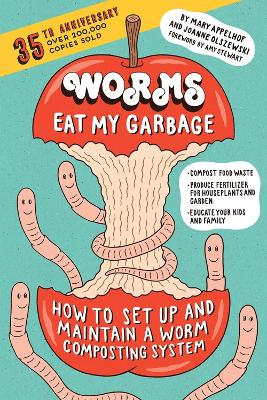Reviewed by annieb123 on
The re-release of a classic first published 35 years ago, Worms Eat My Garbage has everything that the beginner to advanced vermicomposter needs to know to make a thriving habitat for earthworms to compost the organic waste produced by an average family.
The book is full of fun illustrations and easy to read and understand instructions. It's impossible to overstate the importance of shepherding our resources and reusing, recycling, repairing the items we can. In the western world, we throw away a staggering amount of food which could easily be turned into compost to improve the soil so we can reduce the need to transport food and grow our own. Even if we don't use the compost in our gardens, it's fantastic for houseplants and starting seedlings.
I have noticed that the compost also seems to make my houseplants stronger and more able to withstand the stresses of being indoors. None of my 'worm compost' houseplants seem to get aphids or scale or mealybugs or any of the other nasties which attack indoor houseplants.
The book begins by introducing vermiculture and spends a chapter explaining the differences and cultural requirements of the most used species and their strengths and weaknesses. The next few chapters explain the different types of containers, how to build a container (or modify a bought one), figuring out and collecting bedding and how to source your worms. The introductory and setup chapters comprise roughly 35% of the content and they are well illustrated and very well explained in plain, readable text.
The next chapters describe what (and how) to feed your 'worm workers', how to keep the environment in your worm box(es) optimal for production and growth, what other critters can possibly pop up and what to do about them (in general, they're supporting characters and completely harmless, so leave them alone to help your worms... the few exceptions are well explained and illustrated).
There is also an interesting chapter of FAQs including a section on the anatomy and physiology of worms and how they do what they do.
The final 10% of the book is given over to worksheets and record keeping examples (extremely useful), resources, links (updated), appendices and indices.
All in all a thorough and entertainingly written and illustrated book about a useful hobby.
Five stars
Disclosure: I received an ARC at no cost from the author/publisher.
Reading updates
- Started reading
- Finished reading
- 26 December, 2017: Reviewed
